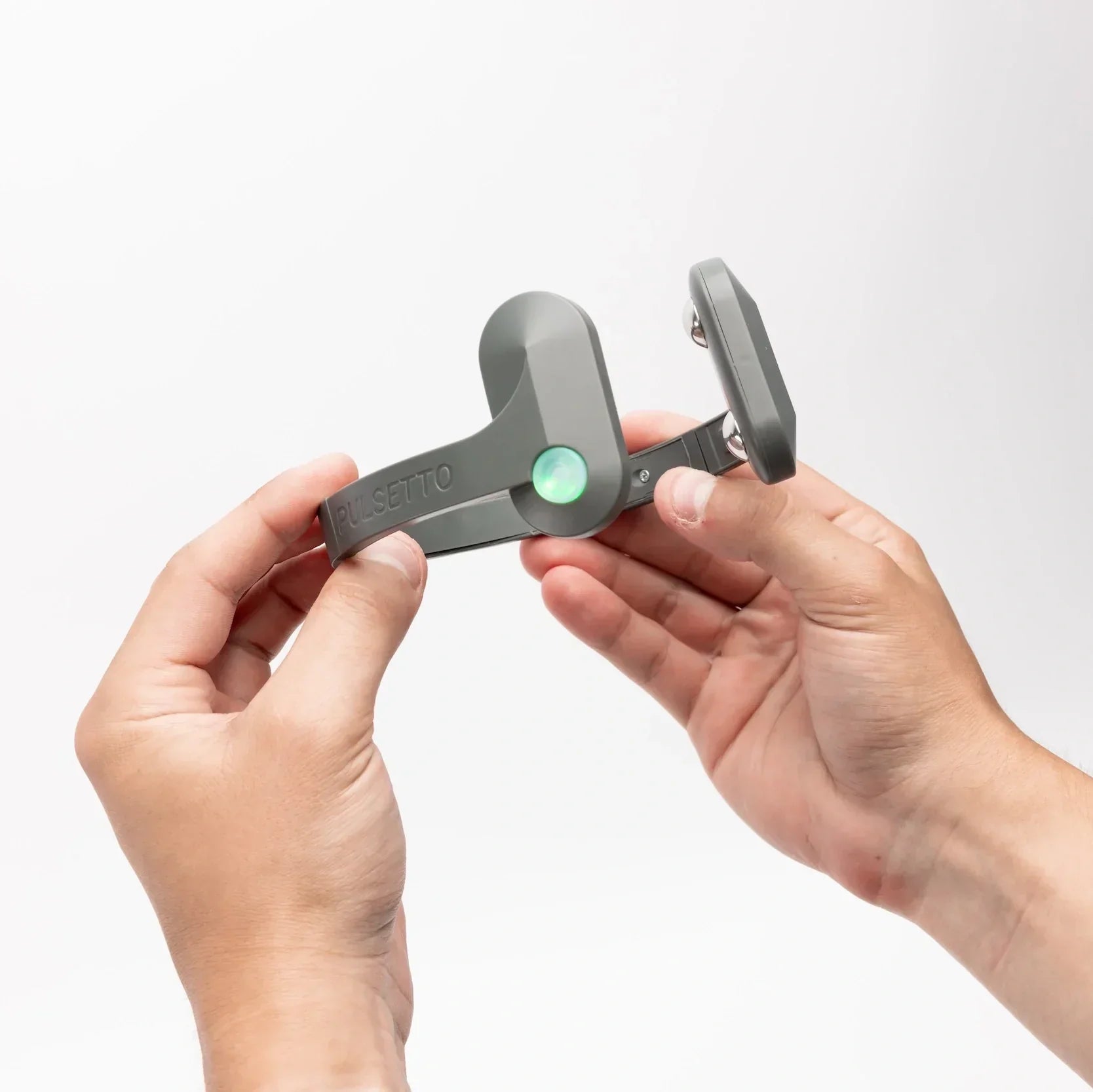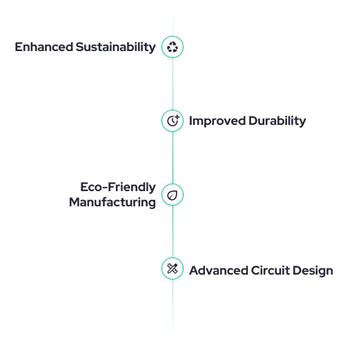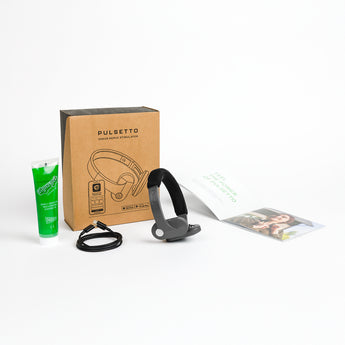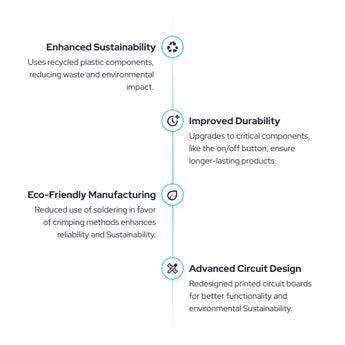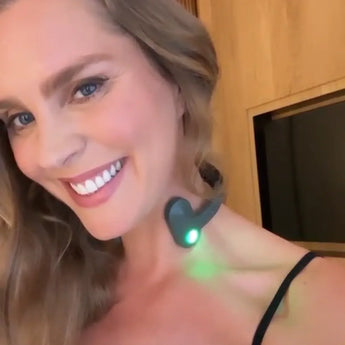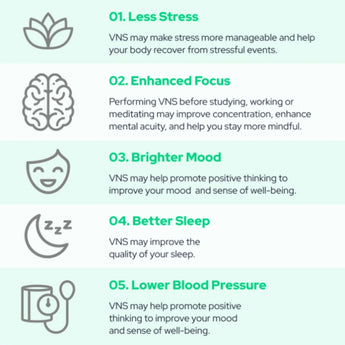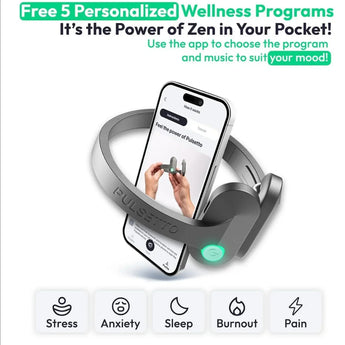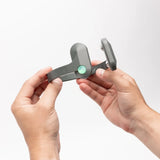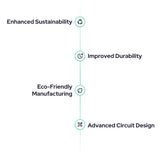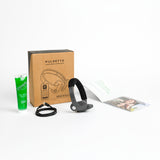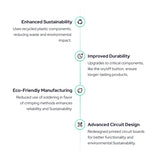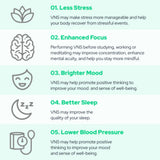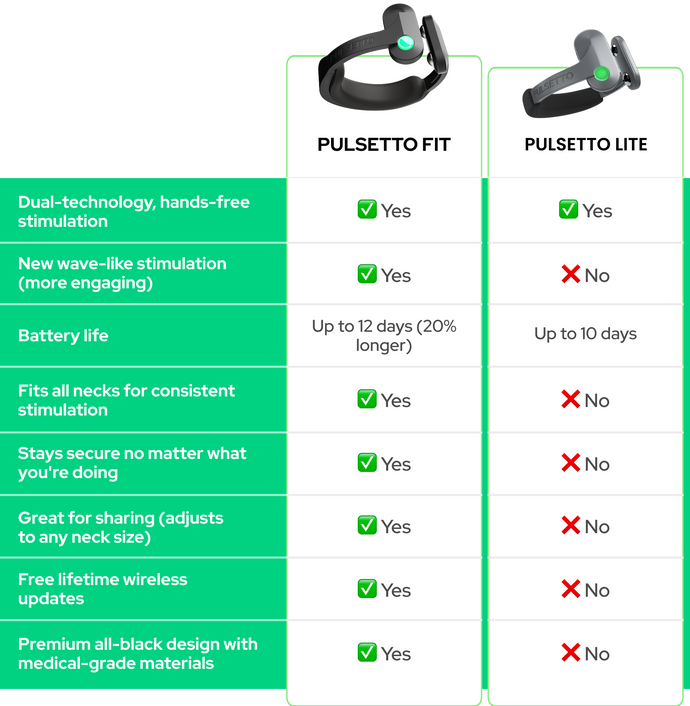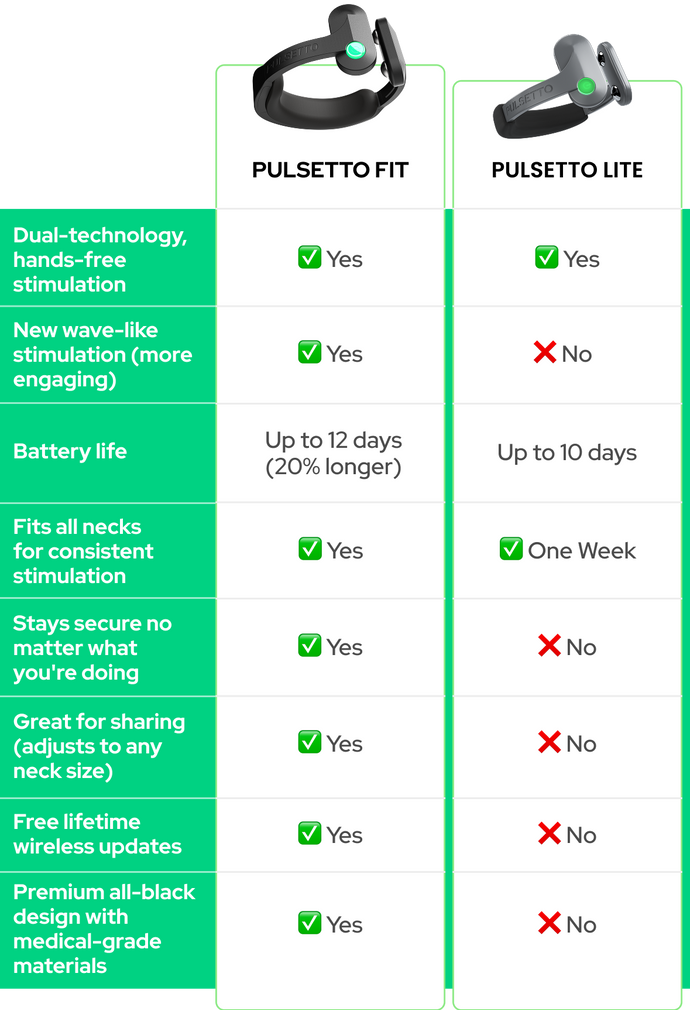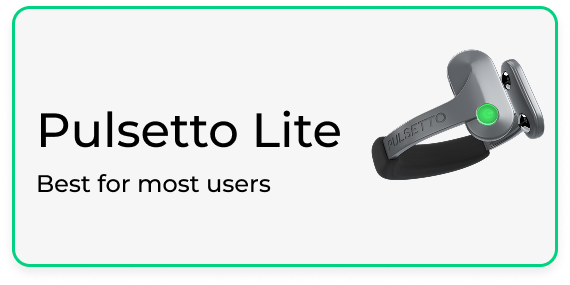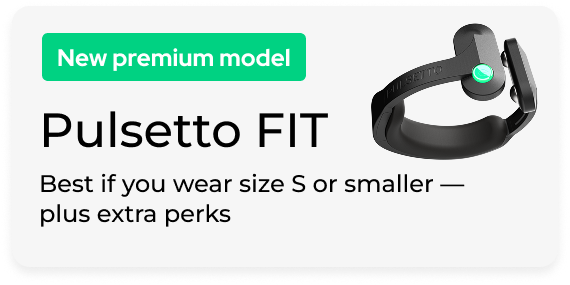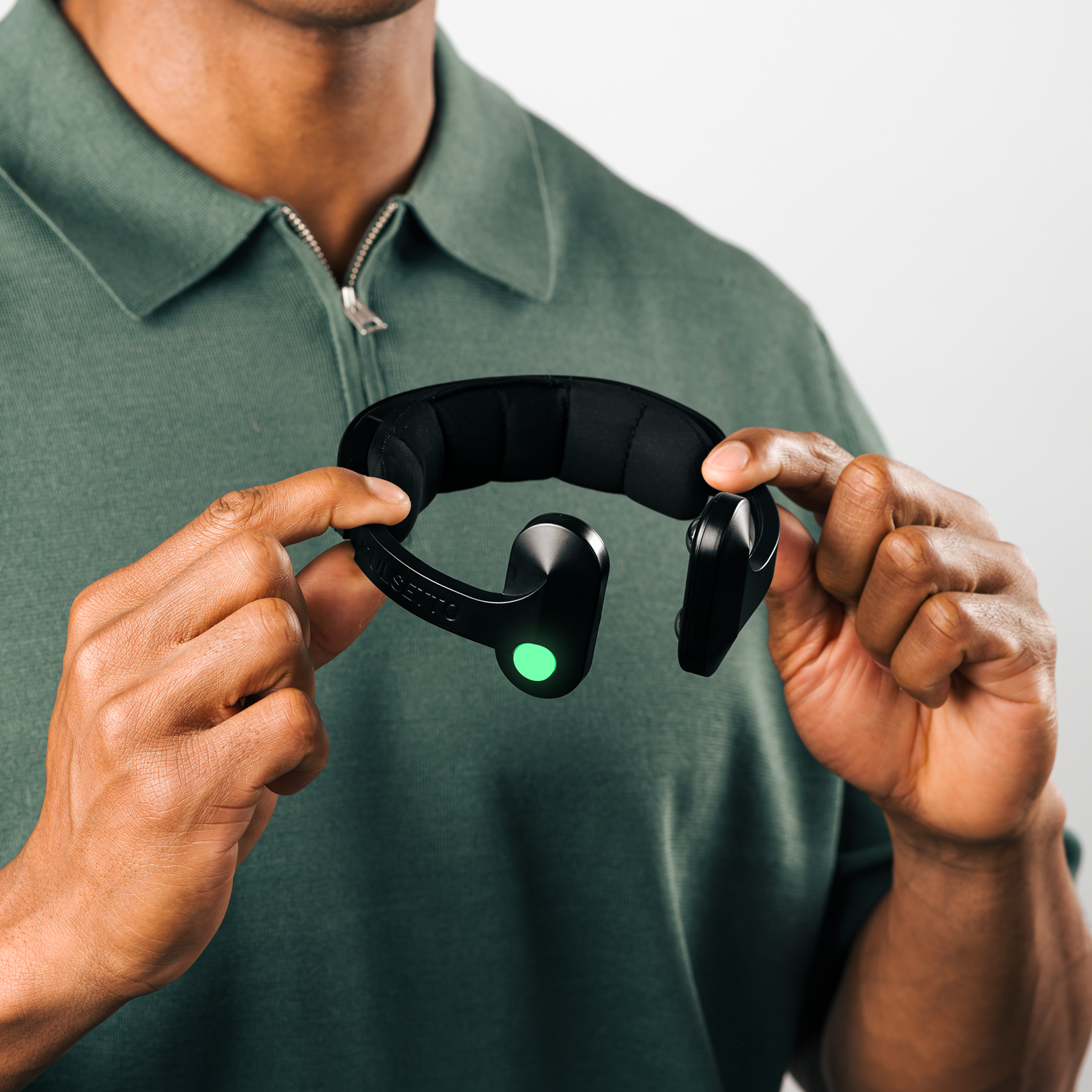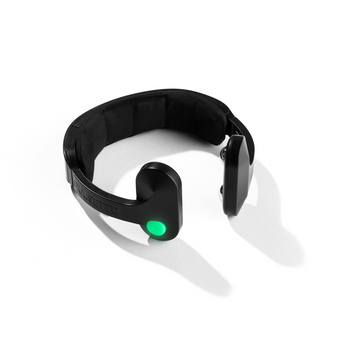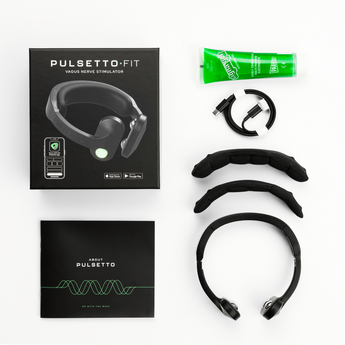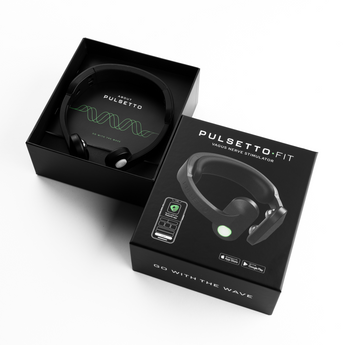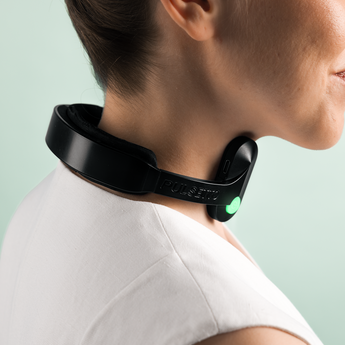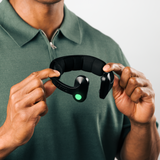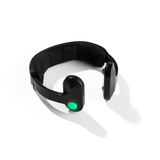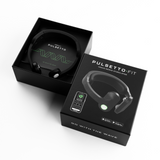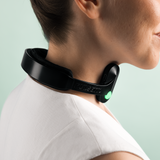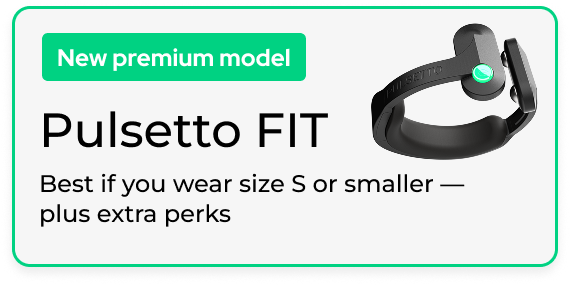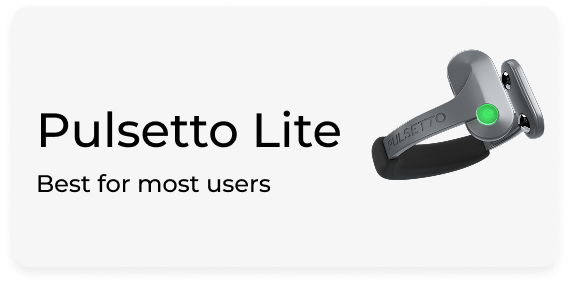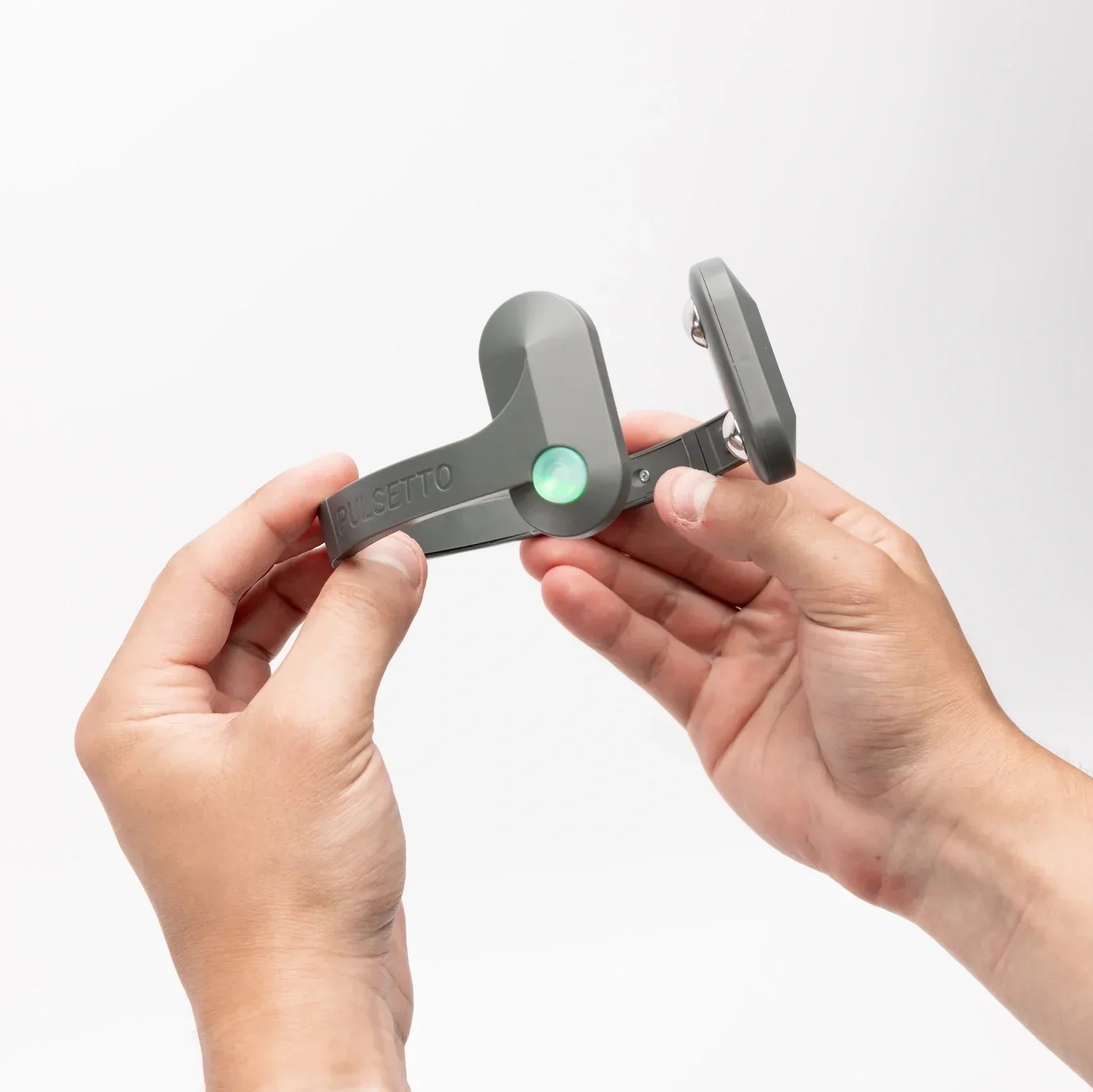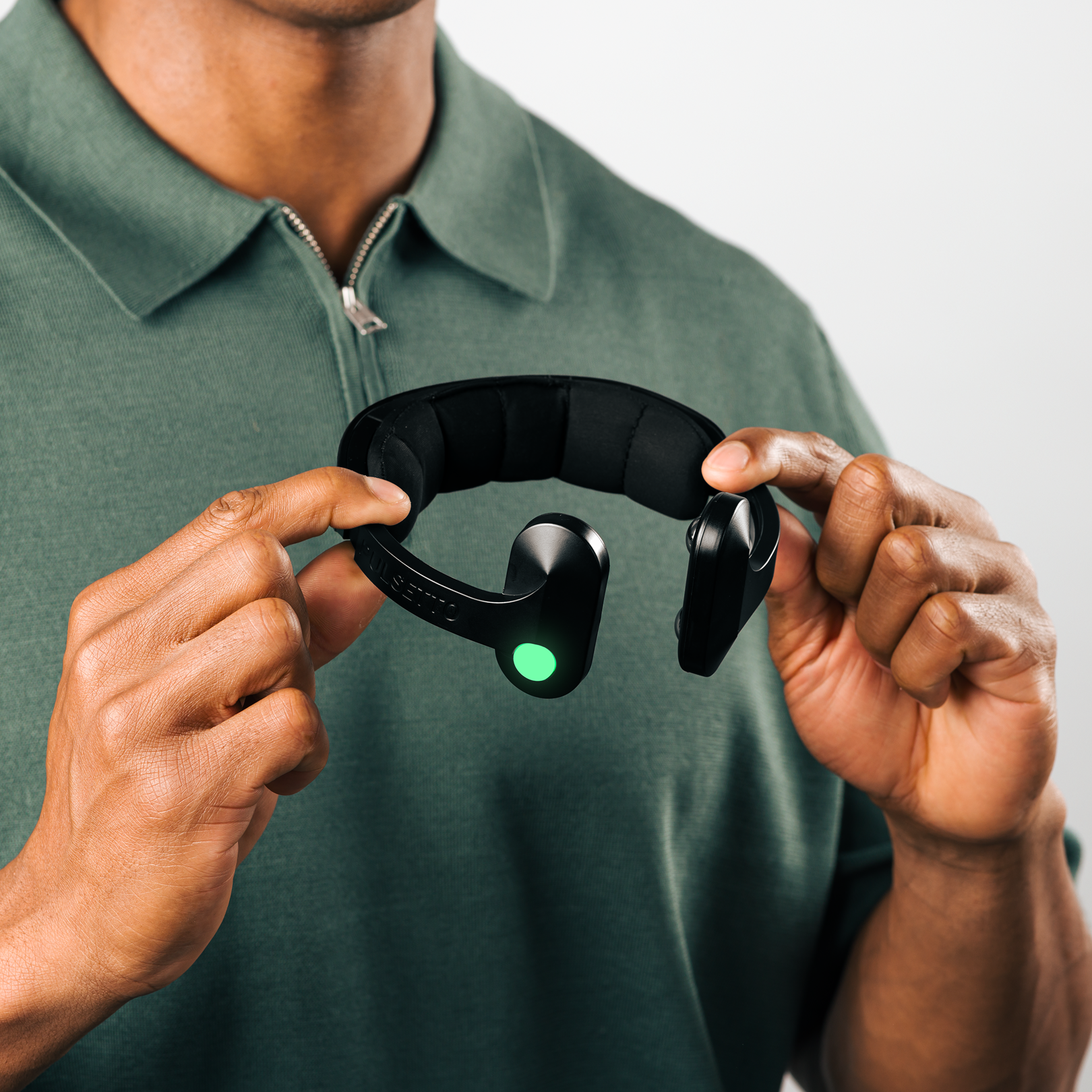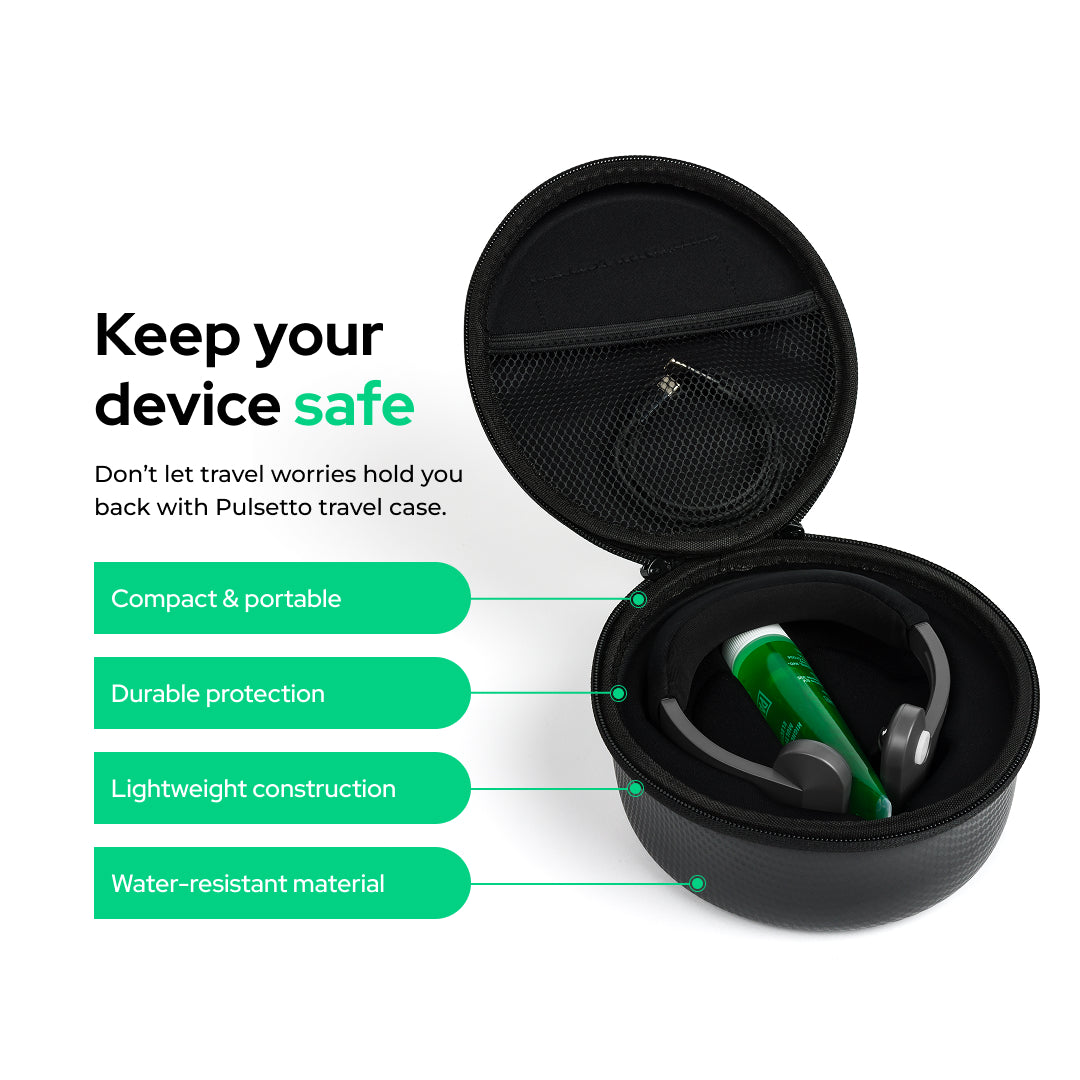HeartMath Inner Balance HRV Score
The HeartMath Inner Balance device helps you track your HRV score and gives you a clear picture of your heart's coherence score. Understanding these scores can help you make lifestyle changes that improve your health.
Tracking HRV Score
The Inner Balance app plots your pulse, HRV, power spectrum, and coherence over time, allowing you to see how your heart rhythms change in response to different activities and emotions.

Aim for higher HRV and coherence scores when using this device. The HRV lines in the graph should also be smooth, not jagged.
How Does HeartMath Inner Balance Track HRV Score?
The Role of Ear Sensors
The HeartMath Inner Balance device uses professional-grade photodetectors in-ear sensors to measure your pulse wave 500 times per second. This high-frequency data collection ensures accurate readings of your heart rhythm patterns, which are then translated into coherence scores.

A view of the HeartMath Inner Balance ear sensors.
By regularly using the HeartMath Inner Balance device, you can identify patterns and triggers that affect your heart coherence. Use this information to make informed lifestyle changes and boost your HRV score.
Data Interpretation and Algorithms
The device uses sophisticated algorithms to interpret the data collected by the ear sensors. These algorithms analyze your heart rhythms to determine your HRV and coherence levels. The app then provides real-time feedback.
Interpreting HeartMath Inner Balance HRV Score
Reading Your HRV Patterns
The HeartMath Inner Balance app provides a visual representation of your heart rhythms, so you can see how they change over time. Typically, you'll see a graph with peaks and valleys representing your heartbeat. Consistent, smooth patterns indicate high coherence, while jagged, erratic patterns suggest low coherence.
Your HRV patterns will fluctuate throughout the day based on various factors like stress, physical activity, and even your thoughts. By regularly monitoring your HRV, you can identify what activities or situations positively or negatively impact your coherence levels.
Indicators of High and Low Coherence Levels
High coherence levels are characterized by smooth, wave-like heart rhythm patterns. When you're in a state of high coherence, you feel calm, focused, and emotionally balanced. This state is often associated with improved cognitive function and better emotional regulation.

The HeartMath device displaying in-sync or high HRV and coherence results.
Low coherence levels are indicated by jagged, irregular heart rhythms. Low coherence is often a sign of stress, anxiety, or emotional distress. During these times, you may feel overwhelmed, scattered, or unable to concentrate. Recognizing these patterns can help you take proactive steps to manage your stress and improve your HRV.

The HeartMath device displaying out-of-sync or low HRV and coherence scores results.
Using the App for Real-Time Feedback
The HeartMath Inner Balance app offers real-time feedback about your HRV and coherence levels. This immediate reporting can help you make adjustments on the fly. For instance, if you notice your coherence levels dropping during a stressful meeting, you can quickly practice the Quick Coherence® Technique (more on this below) to bring your heart rhythm back into balance.
The app provides detailed session reviews, showing you how your coherence levels changed throughout your practice. This information can help you identify trends and make informed decisions about how to improve your HRV score over time.
Ways to Increase HeartMath Inner Balance HRV Score
Improving your HRV score involves making lifestyle changes that promote heart-brain coherence. We’ll learn some effective strategies, including exercise, diet, supplements, and sleep. Each of these areas plays a crucial role in improving your sense of well-being and boosting your HRV score.
Quick Coherence® Technique
The Quick Coherence® Technique is a simple method to quickly shift from a state of stress to one of calm and balance. It involves focusing on your heart and breathing rhythmically while activating a positive feeling. This technique can be practiced anytime, anywhere, and is highly effective in increasing your HRV score. Here’s how to do it:
-
Heart-Focused Breathing: Focus your attention on the area around your heart and breathe slowly and deeply. You can inhale and exhale for 5 seconds each time.
-
Activate a Positive Emotion: Recall a positive feeling—caring for someone or the memory of a treasured possession—to shift into a more coherent and balanced emotional state.
Exercise
Exercise is one of the most effective ways to increase your HRV score. Physical activity helps improve cardiovascular health, reduce stress, and enhance resilience.
Types of Exercise to Boost HRV
When aiming to improve your HRV, focus on activities that promote cardiovascular health and relaxation. Here are some effective types of exercise:
-
Aerobic Exercise: Activities like running, cycling, and swimming are great for improving heart health and increasing HRV.
-
Strength Training: Incorporating weight lifting or bodyweight exercises can also boost your HRV by enhancing muscle strength and reducing stress.
-
Yoga and Tai Chi: These practices combine physical movement with deep breathing and mindfulness, making them excellent for promoting relaxation and increasing HRV.

Tai Chi is a gentle mind-body exercise that originated in China - it enhances HRV by promoting relaxation, reducing stress, and balancing the autonomic nervous system through slow movements and deep breathing.
Exercise Frequency and Duration
Health experts recommend at least 150 minutes of moderate aerobic exercise or 75 minutes of vigorous exercise per week. Additionally, incorporating strength training exercises at least two days a week can further enhance your HRV. Consistent, moderate exercise is more effective for improving HRV than sporadic, intense sessions.
Foods that Improve HRV
Your diet plays an important role in your overall health and can significantly impact your HRV score. Consuming a balanced, nutrient-rich diet supports cardiovascular health, reduces inflammation, and promotes well-being. Here are some examples:
-
Fruits and Vegetables: They’re rich in antioxidants, vitamins, and minerals that support heart health. Aim to fill half your plate with fruits and vegetables at each meal.
-
Whole Grains: Foods like oats, quinoa, and brown rice are high in fiber and help maintain stable blood sugar levels, which is beneficial for HRV.
-
Healthy Fats: Incorporate sources of omega-3 fatty acids, such as fatty fish, flaxseeds, and walnuts, to reduce inflammation and support heart health.
-
Lean Proteins: Include lean meats, poultry, fish, beans, and legumes that supply essential amino acids for muscle repair and overall health.

Reducing your intake of processed foods, sugary drinks, and excessive caffeine and alcohol can also positively impact your HRV.
Supplements for HRV
In addition to a healthy diet, certain supplements can help improve your HRV. These supplements provide essential nutrients that support heart health and reduce inflammation. Some of them are:
-
Omega-3 Fatty Acids: These essential fats, found in fish oil supplements, have been shown to reduce inflammation and support heart health. Aim for 1,000-2,000 mg of EPA and DHA combined per day, preferably taken with meals to enhance absorption.
-
Magnesium: This mineral helps relax the muscles and nerves, promoting better sleep and reducing stress, which can improve HRV. The recommended daily dose is 300-400 mg, taken in the evening or just before sleep.
-
Coenzyme Q10 (CoQ10): This antioxidant supports energy production in cells and has been linked to improved heart function and increased HRV. A typical dose is 100-200 mg per day, taken with meals to improve absorption.
-
Vitamin D: Adequate levels of Vitamin D are essential for cardiovascular health and overall well-being. The recommended daily intake varies, but 1,000-2,000 IU per day is a common dose. Take it with a meal that contains fat for better absorption.
Always consult with a healthcare professional before starting any new supplement regimen.
Importance of Hydration
Staying hydrated is essential for maintaining optimal heart function and improving your HRV. Dehydration can lead to increased heart rate and reduced HRV, so drink enough water throughout the day.
Aim to drink at least 8-10 glasses (each glass is 240ml or 8 fl oz) of water daily; more if you're physically active or live in a hot climate.

Keeping a water bottle with you can help you stay on track with your hydration goals.
Sleep Quality and HRV
Sleep quality directly impacts your HRV. Poor sleep and insomnia can lead to increased stress, reduced cognitive function, and lower HRV. Deep, restorative sleep allows your body to recover from the day's stresses and prepare for the next day. During sleep, your heart rate slows down, and your HRV increases, indicating a state of relaxation and recovery.
Tips for Better Sleep
Here are some practical tips to help you get better sleep and improve your HRV:
-
Maintain a Consistent Sleep Schedule: Go to bed and wake up at the same time every day, even on weekends.
-
Create a Relaxing Bedtime Routine: Engage in calming activities like reading, meditating, or taking a warm bath before bed.
-
Optimize Your Sleep Environment: Ensure your bedroom is cool, dark, and quiet. Use blackout curtains and white noise machines if necessary.
-
Avoid Stimulants: Limit your intake of caffeine and nicotine, especially in the hours leading up to bedtime.
-
Limit Screen Time: Reduce exposure to electronic devices at least an hour before bed, as the blue light can interfere with your sleep.
By following these tips, you can improve your sleep quality and, in turn, boost your HRV score.
Pulsetto Vagus Nerve Stimulation and HRV
Besides HeartMath Inner Balance, you can also Pulsetto–a vagus nerve stimulator–to monitor and increase your HRV score.

How Pulsetto Works
Pulsetto operates by delivering non-invasive, gentle electrical pulses to the vagus nerve—an important component of the parasympathetic nervous system. By stimulating the vagus nerve, the device facilitates a shift from the sympathetic (fight-or-flight) state to a parasympathetic (rest-and-digest) state, inducing feelings of calmness. As a result, you’ll experience reduced heart rate and blood pressure.
Impact on HRV
Using Pulsetto can increase heart rate variability (HRV) by:
-
Enhancing Parasympathetic Activity: Regular stimulation of the vagus nerve can lead to improved parasympathetic tone, which is associated with higher HRV scores. A higher HRV indicates better adaptability to stress and improved emotional regulation.
-
Promoting Relaxation: The calming effects of Pulsetto can help reduce stress and anxiety. By fostering a relaxed state, the device supports a balanced autonomic nervous system.
Experience the calming effect of Pulsetto today!
Frequently Asked Questions (FAQ)
What is HeartMath Inner Balance, and how does it measure HRV?
HeartMath Inner Balance is a biofeedback device that measures Heart Rate Variability (HRV) using ear sensors to monitor heart rhythms. It provides real-time feedback on your coherence levels, helping you understand the connection between your heart and brain.
How often should I use HeartMath Inner Balance?
For optimal results, it's recommended to use the HeartMath Inner Balance device daily. Consistent monitoring and practice of coherence techniques can help you better understand your HRV patterns and make informed lifestyle changes to improve your score.
Why is HRV important for health?
HRV is a key indicator of autonomic nervous system health, reflecting your body’s ability to adapt to stress and environmental changes. Higher HRV is associated with better emotional regulation, cardiovascular health, and overall resilience.
How can I increase my HeartMath Inner Balance HRV score?
You can boost your HRV score through regular exercise, a balanced diet, proper sleep, and using techniques like the Quick Coherence® Technique. Consistent use of HeartMath Inner Balance and other devices like Pulsetto can also help monitor and improve your HRV.
What makes Pulsetto a good complement to HeartMath Inner Balance?
Pulsetto, a non-invasive vagus nerve stimulator, complements HeartMath Inner Balance by providing quick stress relief and enhancing HRV. Its targeted electrical pulses stimulate the vagus nerve, promoting relaxation and improving autonomic balance.




